33 Stale Marriage Ideas From the ’50s We’ve Thankfully Left Behind
Let’s take a stroll back to the 1950s—a time of poodle skirts, rock ‘n’ roll, and, well… some pretty questionable marriage advice. Back then, the idea of a “perfect” marriage came neatly packaged in rigid gender roles, unrealistic expectations, and a whole lot of silence in the name of propriety.
Sure, it made for glossy magazine covers and sitcom-worthy scripts, but the reality behind those pastel-colored picket fences wasn’t always picture perfect.
Fast forward to today, and thankfully, we’ve shed many of those outdated ideals like a bad bridal registry. Modern relationships thrive on communication, equality, and mutual respect—not on who makes the coffee or who’s “supposed” to take care of the kids.
So, let’s look back (with a raised eyebrow and maybe a chuckle) at some outdated marriage ideas from the ’50s we’re better off without—and celebrate just how far love and partnership have come. Ready for some retro reality checks?
1. La cena en la mesa a las 17.00 horas
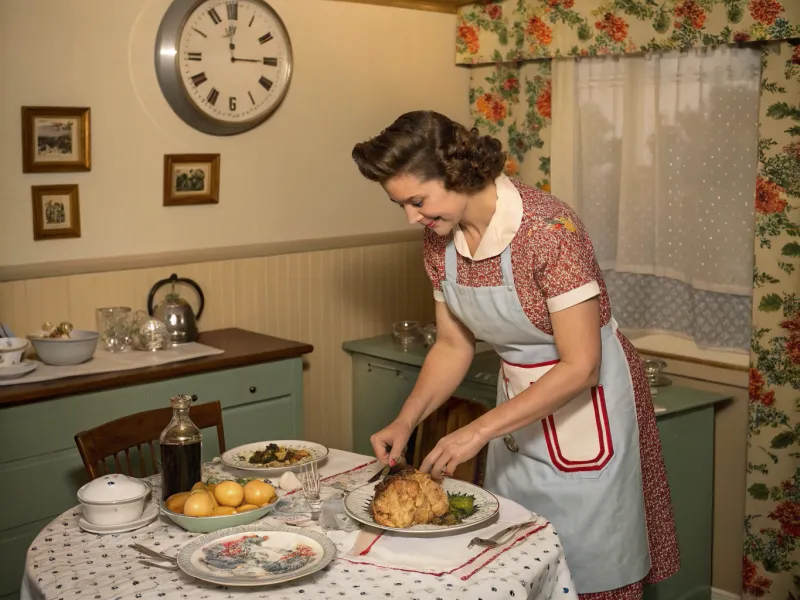
Ladies, let’s kick things off with the notion that dinner must be served at precisely 5 PM. Apparently, en los años 50, the ultimate symbol of wifely devotion was a roast dinner waiting as soon as your husband walked through the door. Picture this: you’ve just wrangled the kids, cleaned the house until it sparkled, and somehow summoned the energy to prepare a three-course meal—all before the clock struck five.
In today’s whirlwind world, this idea feels more like a scene from a sitcom than reality. Who even gets home by 5 PM anymore? With traffic, work commitments, and the allure of take-out, the idea that dinner should be on the table by this specific time is a bit laughable.
Modern relationships thrive on partnership and flexibility. Whether it’s ordering in or cooking together post-commute, the focus is on what works for both partners. So, here’s to embracing spontaneity and saying goodbye to rigid timelines that belong in a time capsule, not our kitchens!
2. La esposa como ama de casa a tiempo completo

Oh, el soñar con ser ama de casa a tiempo completo en los años 50—if that was ever truly a universal dream! The idea was that a wife’s role was solely to tend the home and children, creating a perfect domestic haven. But let’s be real, this notion was more about societal expectations than individual choice.
Fast forward to today, and many women are balancing careers, families, and personal ambitions. The home is no longer just a woman’s domain, and thank goodness for that! Relationships now recognize that both partners can share responsibilities in the house, redefining what it means to be a homemaker.
While some may choose the path of homemaking, for others, the freedom to carve out a career is a cause for celebration. The beauty of modern marriage is that roles are fluid, and choice is king—or queen! So, let’s raise a toast to the variety of lifestyles that bring harmony and fulfillment, beyond the confines of a 1950s sitcom.
3. Obediencia conyugal
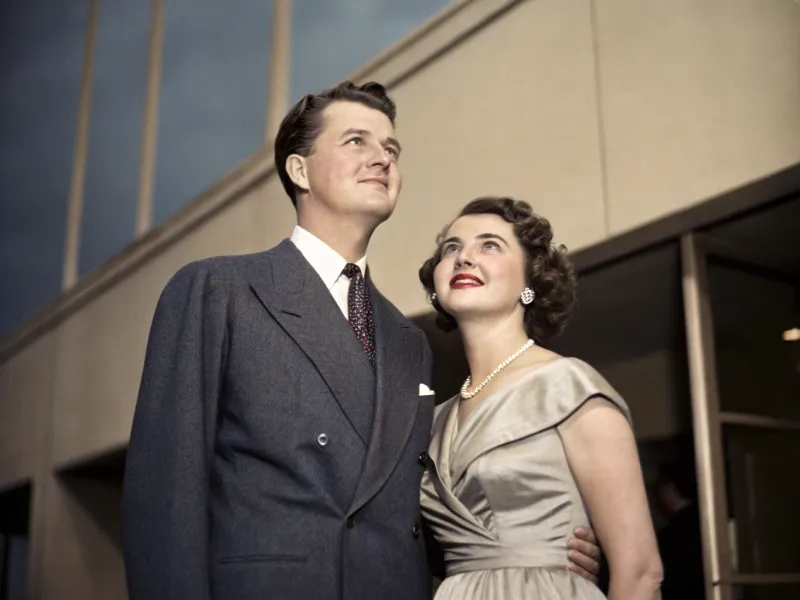
Ah, yes, the age-old idea of marital obedience—the one we probably associate with old black-and-white movies rather than real life. The concept was simple: the husband led, and the wife followed. Cue the eye rolls! This notion of obedience stemming from the idea of male dominance is as outdated as rotary phones.
In our modern era, marriages thrive on partnership and equality. It’s about listening to each other, valuing each other’s opinions, and making decisions together. Those words like “obedience” have no place in the language of love anymore.
Today, mutual respect and shared goals guide relationships. Love is a dance, not a march, and both partners get to lead. So, let’s step forward together, leaving behind the obedient wife trope in the annals of history, where it belongs!
4. El marido como único sostén de la familia

Remember when the man of the house was expected to be the sole breadwinner, setting out each day with a briefcase and a kiss on his wife’s cheek? This was seen as the ideal, where a man’s worth was tied to his ability to provide financially while the wife managed the home front.
Fast forward to now, and this notion feels as quaint as a black-and-white TV show. Dual-income families are now the norm, with both partners contributing financially and supporting each other’s careers. The rise of gender equality in the workplace has allowed men and women to redefine success and partnership in marriage.
So here’s to breaking the mold and celebrating shared responsibilities. Whether it’s joint bank accounts or shared career goals, today’s marriages are about teamwork and support, rather than antiquated financial hierarchies. The modern marriage thrives on balance and respect, allowing each partner to shine.
5. Camas separadas para los cónyuges

Separate beds? For married couples? It sounds like something straight out of an old TV sitcom, doesn’t it? Yet, in the 1950s, it wasn’t uncommon for spouses to sleep in twin beds, sometimes even in separate rooms. This idea was rooted in a sense of decorum and personal space, oddly suggesting closeness without the proximity.
Today, the thought of separate beds for couples is more likely to evoke chuckles than agreement. Modern couples often prioritize intimacy and connection, finding comfort in a shared bed. It’s not just about sleeping; it’s about nurturing closeness, even if that means dealing with a midnight snorer!
While some couples might choose their own space for a good night’s sleep, the norm is leaning towards sharing a bed. It’s a symbol of modern partnership, where closeness isn’t measured by how we sleep, but how we connect.
6. Women Shouldn’t Work After Marriage
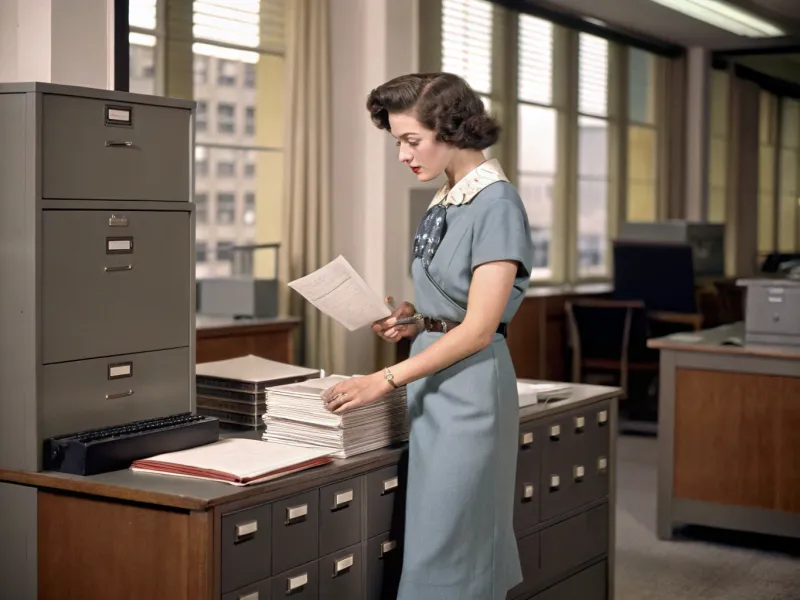
Oh, the notion that a woman’s career must end at “I do.” Once upon a time, marriage was seen as the ultimate ‘promotion’ for women, and that promotion often came with a pink slip for whatever job they had. The idea was that a woman’s place was at home, managing everything domestic.
Today, this concept seems almost laughable. Marriage isn’t the end of a woman’s ambition or career, and modern couples often support each other’s professional journeys. The idea that a woman should quit her job after marriage is as outdated as dial-up internet.
Now, marriage is a partnership where both partners support each other’s dreams, whether they involve climbing the corporate ladder or nurturing a passion project. Let’s cherish the freedom to pursue our goals—wedding ring and all—because ambition doesn’t stop at the altar.
7. Los hombres toman todas las decisiones importantes
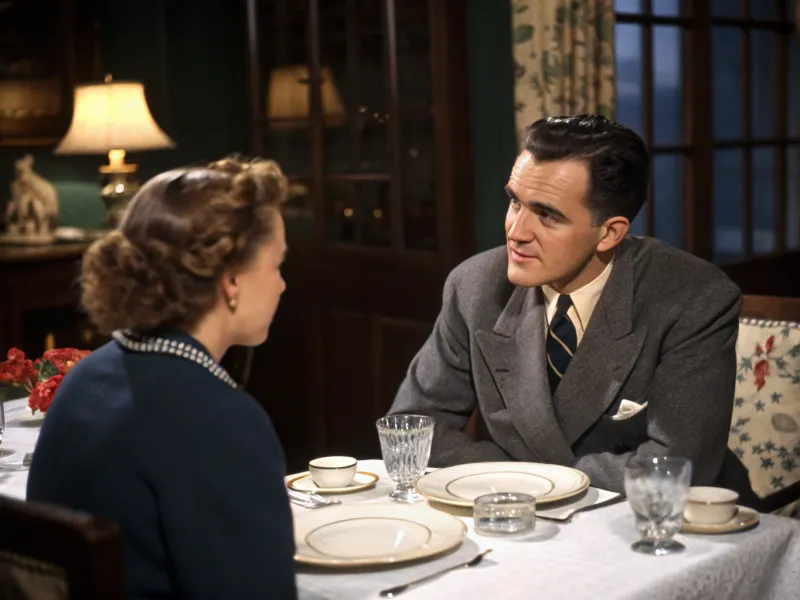
Here we have the classic trope of the husband as the decision-maker, the one who held the final say in all things ‘important.’ This was a staple of the 1950s, where the wife’s role was to nod and agree while the husband decided everything from finances to family vacations.
Flash forward to now, and this notion feels like the plot of an old-fashioned drama. Today’s marriages thrive on collaboration, with both partners having a voice in decision-making. Whether it’s buying a house or planning a vacation, modern couples make choices together, valuing each other’s insights.
The era of unilateral decision-making is over. Relationships are built on mutual respect, where both voices matter. So here’s to shared decisions and celebrating the beauty of collaboration, where everyone gets a seat at the table—and an equal say in what’s for dinner!
8. El divorcio es un tema tabú
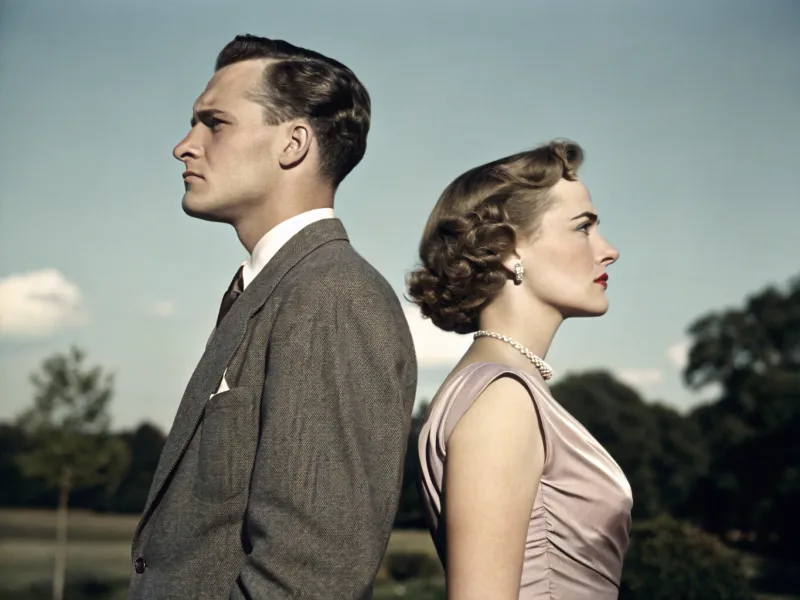
Back in the day, saying the ‘D-word’ was almost as scandalous as admitting you watched TV in your pajamas. Divorce was seen as a failure, a taboo subject that was whispered about in hushed tones. It was less about personal happiness and more about maintaining appearances.
Today, while divorce isn’t exactly celebrated, it is recognized as a valid option when a marriage isn’t working. It’s a way to prioritize personal well-being and happiness, acknowledging that sometimes relationships don’t go as planned—and that’s okay.
Modern relationships understand that sometimes parting ways is the healthiest step forward. So, let’s break the silence and embrace open conversations about what makes us truly happy, because a marriage based on fear of divorce is no marriage at all.
9. El matrimonio es para procrear

Hubo un tiempo en que la idea de que el matrimonio tenía como principal objetivo la procreación estaba tan aceptada como la de que Elvis era el Rey. La idea era que casarse conducía naturalmente a formar una familia, con la proverbial valla y un enjambre de hijos.
Fast forward to today, and marriage is celebrated for so much more than just creating baby booties. It’s about partnership, love, and building a life together—whether or not that includes children. Countless couples choose to marry with no intention of expanding their family tree beyond fur babies or houseplants.
The beauty of modern marriage is that it’s a personal journey, not a one-size-fits-all scenario. So, let’s celebrate love in all its forms and recognize that the choice to have children, or not, belongs to the couple alone. Because love doesn’t require a nursery to flourish!
10. La esposa debe lucir siempre perfecta
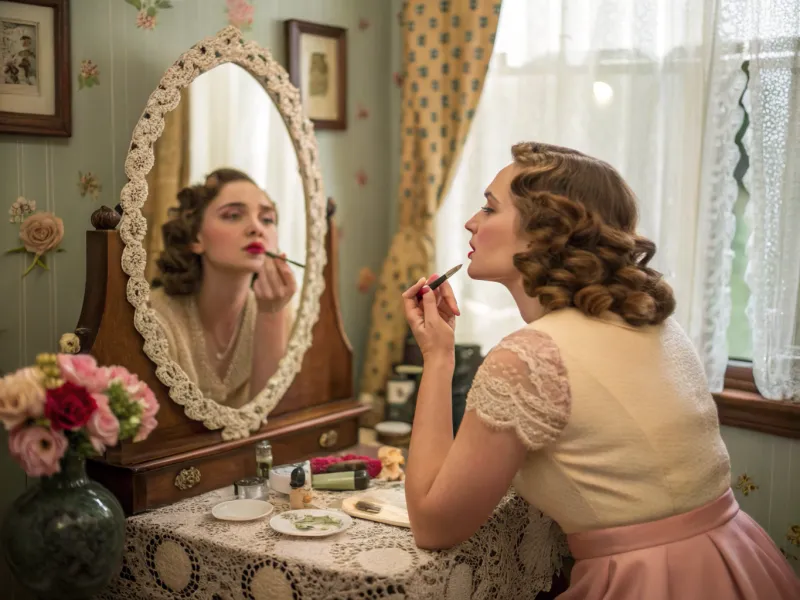
Ladies, ever been told to ‘put on a little lipstick’ before your husband gets home? En los años cincuenta, the expectation was that a wife would always look her best for her husband, as if she lived on a perpetual Hollywood set. This idea was less about personal expression and more about fulfilling a societal role.
Nowadays, this notion feels downright exhausting. Modern marriages thrive on authenticity and comfort, where both partners can be themselves—messy hair and all. The idea of maintaining a flawless appearance 24/7 is unrealistic and unnecessary.
In today’s world, love is about connecting with the real person, not just a polished exterior. So here’s to embracing the beauty of imperfection and knowing that true love sees beyond a perfect eyeliner flick or a well-coiffed hairdo!
11. Housework is a Woman’s Duty
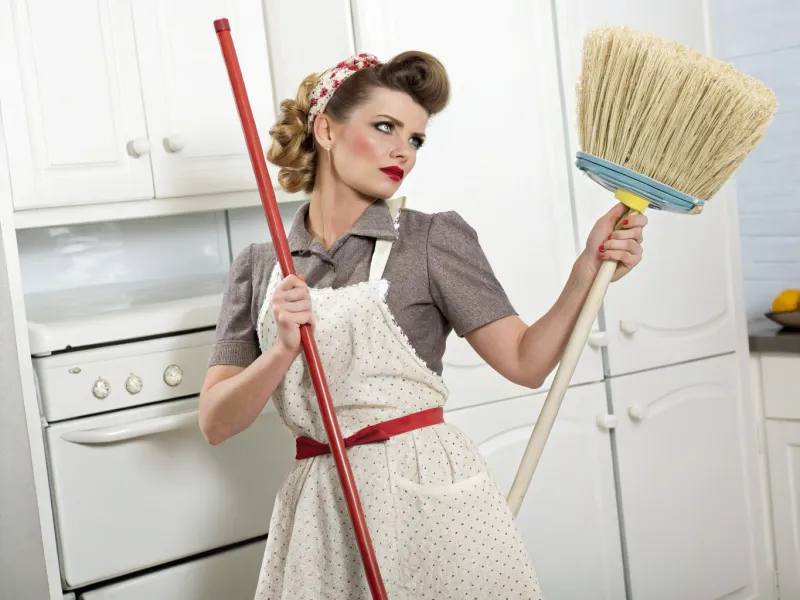
¿Recuerdas los viejos programas de televisión en los que la mujer siempre andaba de un lado para otro con un trapo, asegurándose de que la casa estuviera impecable? En los años 50, las tareas domésticas se consideraban intrínsecamente femeninas, y las mujeres debían asumir el peso de todas ellas.
Today, that image feels as dated as the commercials that suggested smoking was good for you. Modern marriages operate on teamwork, with both partners sharing the responsibilities of keeping a home. Whether it’s vacuuming, cooking, or folding laundry, it’s all hands on deck!
The shift towards shared housework reflects a broader understanding of equality and respect in relationships. So here’s to rolling up our sleeves together and making chores a shared adventure rather than a solo performance!
12. Las esposas no deben ganar más que los maridos

Oh, the scandal of a wife earning more than her husband! En los años cincuenta, this was seen as a disruption to the natural order, where the husband was supposed to be the primary breadwinner. The idea was wrapped up in notions of masculinity and societal roles.
Hoy en día, la diferencia de ingresos en los matrimonios se ve desde un prisma completamente distinto. Muchas parejas celebran el éxito de uno u otro sin preocuparse de quién gana más. La atención se centra en el apoyo mutuo y los objetivos compartidos.
The idea that a wife shouldn’t out-earn her husband has been tossed out with the black-and-white TVs. Modern relationships are built on support and respect, where financial dynamics are just one part of a much bigger picture. Here’s to celebrating success—no matter who brings home the bigger paycheck!
13. Men Don’t Do Emotional Labor
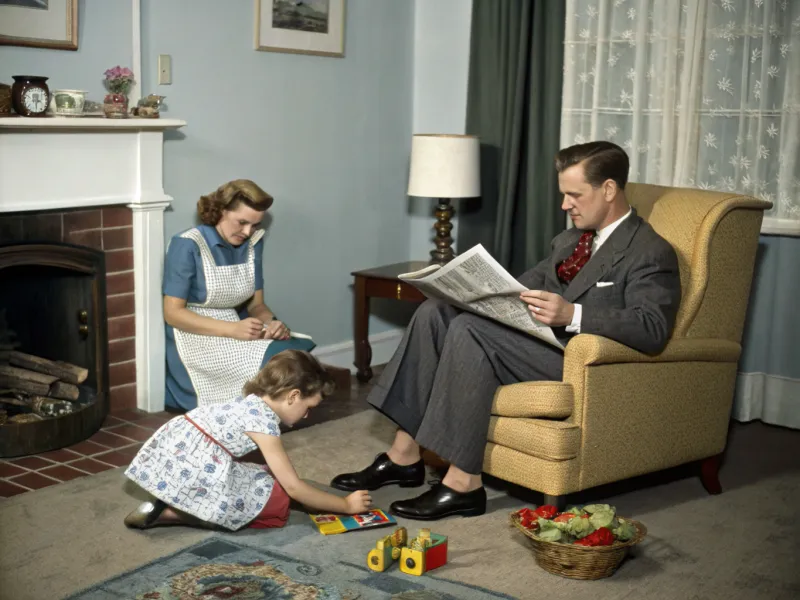
Back in the day, the emotional labor of maintaining a household was often the sole domain of women. This included everything from remembering birthdays to managing social calendars, seen as tasks that naturally fell to the wife. Meanwhile, husbands could focus on more ‘important’ things, like mowing the lawn.
In today’s world, this division seems downright archaic. Emotional labor is increasingly recognized as a shared responsibility, with both partners contributing to the emotional well-being of their relationship and family.
Modern marriages prioritize empathy, communication, and shared emotional responsibilities. It’s about both partners being emotionally present and supportive. So let’s ditch the old scripts and embrace a partnership where emotional labor is a team effort!
14. Las muestras públicas de afecto son tabú
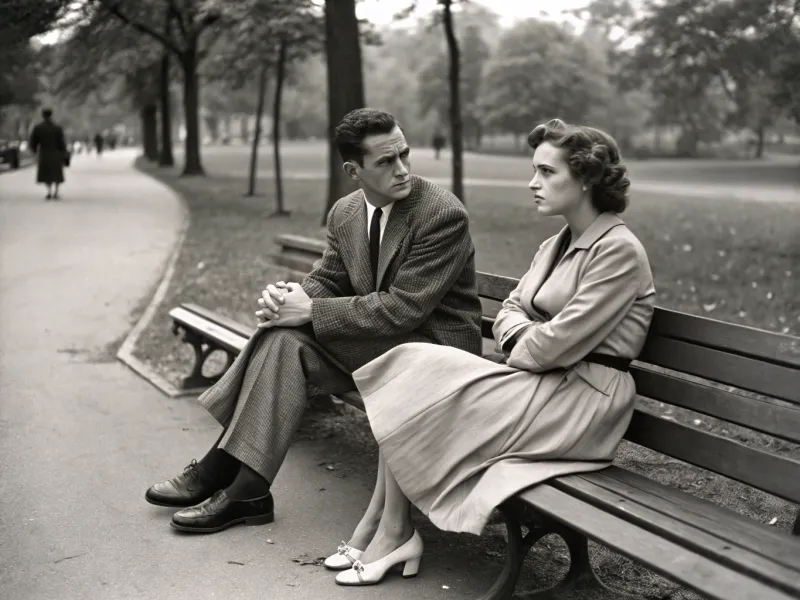
Remember when holding hands in public was as scandalous as sneaking a sip of your parents’ sherry? In the 1950s, public displays of affection (PDAs) were considered inappropriate, as public decorum bordered on the puritanical.
Hoy en día, los tortolitos se ven por todas partes, cogidos de la mano, besándose o abrazándose en cuanto tienen ocasión. Las PDA se han convertido en una forma normal y aceptada de mostrar afecto, liberándose de las restricciones de antaño.
Today’s couples celebrate their love openly, without fear of side-eye from strangers. Here’s to expressing affection in whatever way feels right, whether it’s a cheeky kiss on the subway or a cozy cuddle at a café!
15. Los maridos saben más
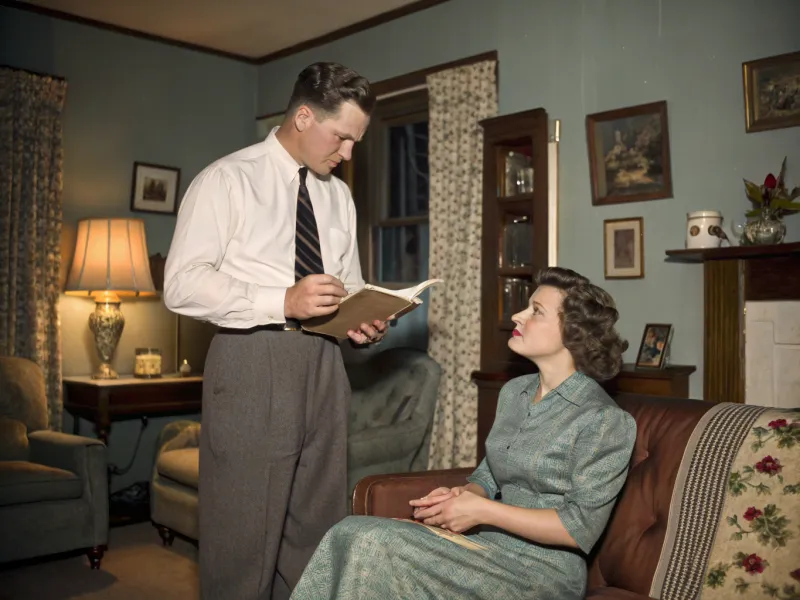
And they say husbands know best! This idea was a staple in the 1950s, where the husband’s word was often seen as the final say in household and life matters. It was an era when phrases like “Father knows best” were taken seriously, reflecting societal norms that placed men in positions of unquestioned authority.
In today’s enlightened age, the ‘hubby knows best’ trope has lost its sheen. Modern marriages celebrate equality and shared decision-making, where both partners’ opinions are valued and respected.
The shift towards equal partnerships reflects a broader understanding of mutual respect and co-leadership in relationships. So here’s to leaving behind outdated notions of authority and embracing a partnership where both voices are heard and valued equally!
16. Nunca te vayas a la cama enfadado

Ah, the age-old advice that couples should never go to bed angry—like a magic spell that would somehow fix all problems before sunrise. This notion was rooted in the idea that unresolved conflicts would fester overnight, leading to bigger issues.
Today, we know that sometimes it’s okay to sleep on it. Taking a break can provide perspective, allowing couples to approach conflicts with a clearer mind and open heart. The idea isn’t to ignore issues, but to tackle them when both are ready.
Modern relationships focus on healthy communication and emotional maturity, understanding that conflicts aren’t resolved by the ticking clock but by mutual respect and understanding. So let’s toast to getting some beauty sleep and tackling challenges with a fresh perspective!
17. The Wife is the Family’s Social Secretary
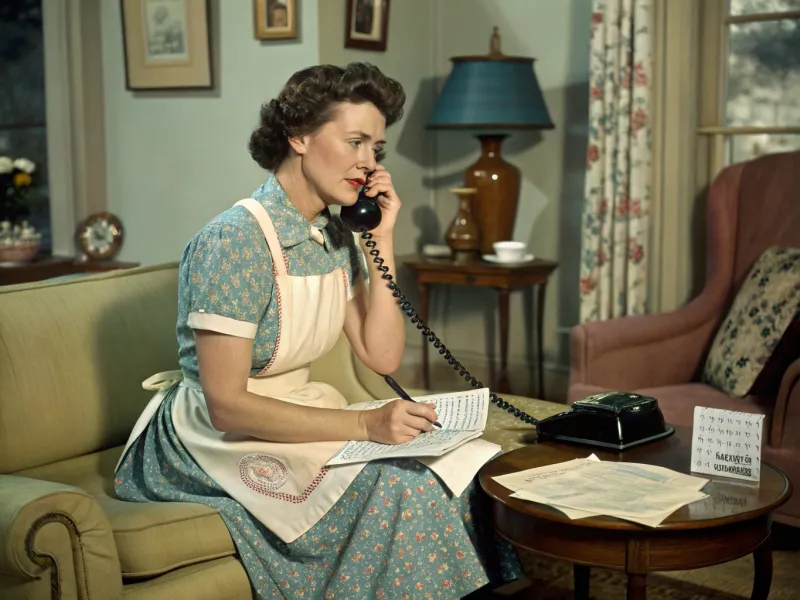
Once upon a time, the wife was expected to be the family’s social secretary, juggling invitations, organizing playdates, and ensuring the social calendar was up to date. This role was part of the broader expectation that women managed all things social and domestic.
In today’s world, this expectation feels as outdated as rotary phones. Modern couples share the responsibilities of managing social engagements, recognizing the importance of teamwork in keeping life running smoothly.
The shift towards shared social responsibilities reflects a broader understanding of equality and partnership in marriage. Here’s to modern relationships where both partners contribute to the family’s social life, making collaboration the new norm!
18. Marriage is Forever—No Matter What
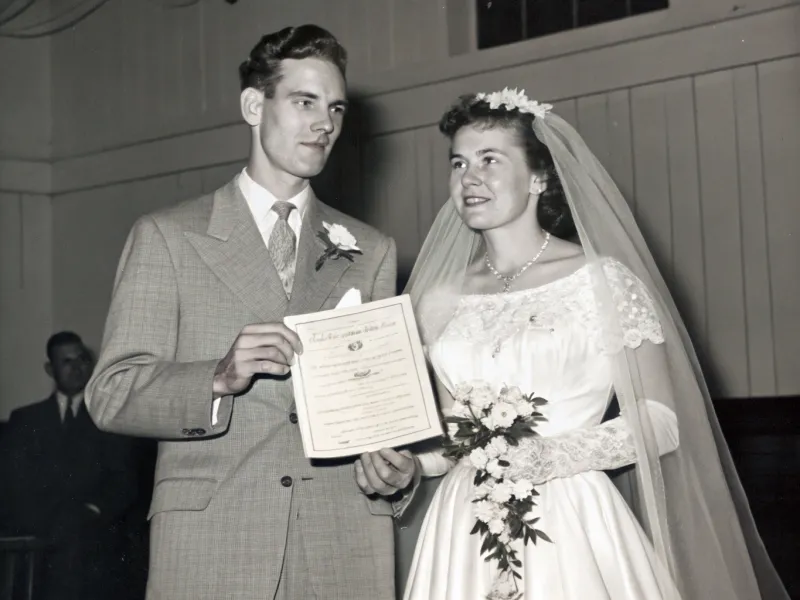
En los años cincuenta, la idea de que el matrimonio era para siempre, sin importar las circunstancias, estaba arraigada en las normas sociales. El divorcio era el último recurso, y permanecer juntos se consideraba un deber, independientemente de la felicidad o el crecimiento personal.
Today, the concept of marriage has evolved to prioritize personal well-being and mutual growth. While many marriages do last a lifetime, the understanding that relationships can change and sometimes end is acknowledged as part of life’s journey.
Modern relationships focus on mutual support and happiness, recognizing that sometimes paths diverge. So let’s celebrate love in all its forms and understand that commitment is about quality, not just longevity!
19. Mantener los problemas en privado

Back in the day, airing your dirty laundry was considered a major faux pas. Marriage problems were kept behind closed doors, with couples encouraged to maintain a façade of perfection, even if things weren’t rosy.
Hoy en día, se está desmantelando el tabú que impedía compartir las luchas matrimoniales. Cada vez se reconoce más el valor de la comunicación abierta con amigos, familiares o terapeutas, que proporciona apoyo y perspectiva.
Modern relationships understand that seeking help and sharing experiences is a strength, not a weakness. Let’s embrace the power of community and support, knowing that we’re not alone in our challenges!
20. La esposa perfecta es silenciosa y dulce

The perfect wife of the 1950s was expected to be silent and sweet, embodying the demure, gentle persona that wouldn’t dare ruffle feathers. It was an era when a woman’s voice was often stifled in favor of maintaining peace and appearances.
Today, the notion of a silent wife belongs in the past. Modern marriages celebrate strong, vocal women who express their thoughts and feelings. Marriage is a partnership where both voices matter, and silence isn’t golden.
Let’s cherish the beauty of open expression, where modern relationships thrive on communication and mutual respect. Silence is no longer a virtue, and that’s something to celebrate!
21. El marido es el disciplinario
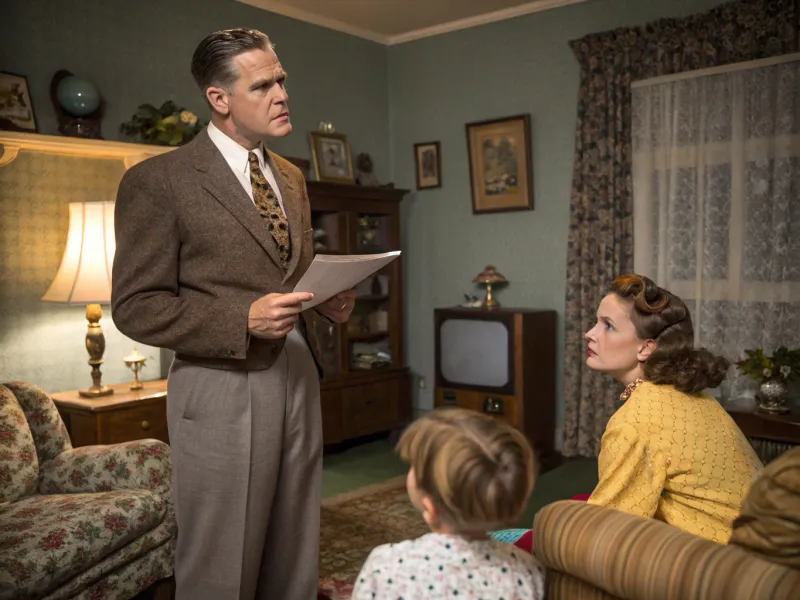
En la década de 1950, el marido era considerado a menudo como el disciplinario de la familia, imponiendo la ley mientras la mujer cuidaba y tranquilizaba. Esta dinámica reflejaba los roles sociales más amplios del hombre como figura de autoridad en el hogar.
Hoy en día, la dinámica parental se ha desplazado hacia responsabilidades compartidas en la disciplina y la crianza. Ambos progenitores participan en la orientación y el apoyo a sus hijos, reconociendo la importancia del equilibrio y la colaboración.
Modern relationships focus on teamwork in parenting, understanding that both partners bring valuable perspectives. Here’s to shared roles and equal involvement in raising the next generation!
22. Las esposas deben estar agradecidas por lo que tienen
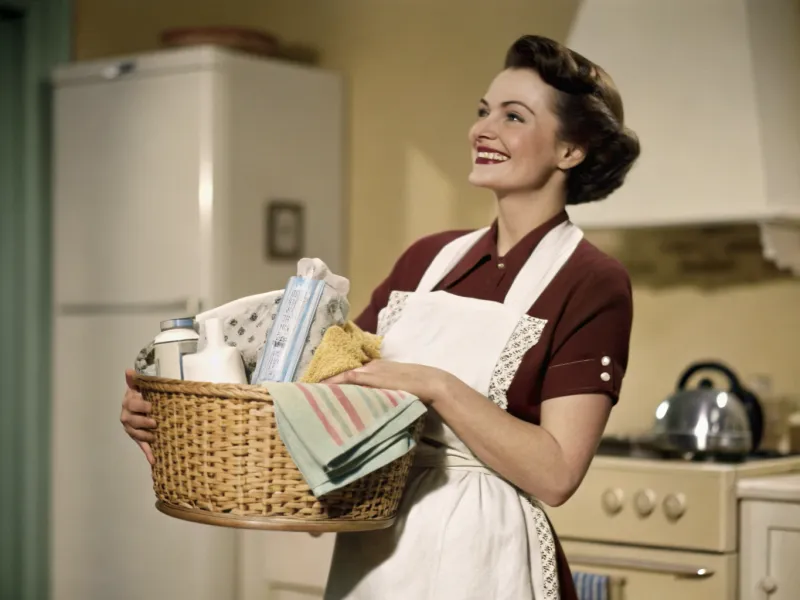
Señoras, ¿alguna vez les han dicho que deben estar agradecidas por lo que tienen, por modesto que sea? En los años cincuenta, se esperaba que las esposas se conformaran con lo que tenían y no con lo que podían aspirar a tener.
Hoy en día, esta noción parece limitada y anticuada. Los matrimonios modernos reconocen el valor de la ambición y el crecimiento, y animan a sus miembros a soñar a lo grande y a perseguir sus objetivos, juntos e individualmente.
The idea that gratitude should limit ambition has no place in today’s relationships. Here’s to celebrating aspirations and supporting each other in achieving dreams, because gratitude and ambition can coexist beautifully!
23. La esposa como anfitriona, no como compañera
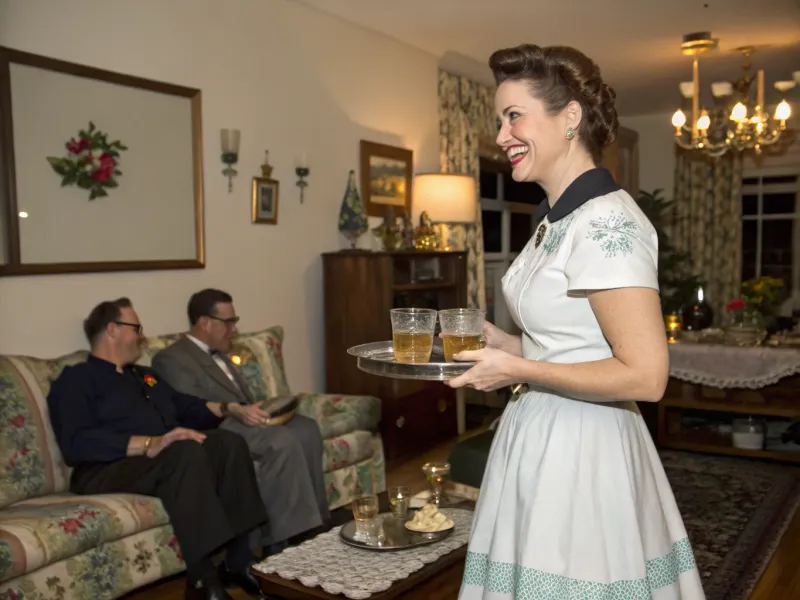
En la década de 1950, el papel de la esposa solía consistir en ser la perfecta anfitriona, asegurándose de que las reuniones sociales transcurrieran sin problemas mientras su marido entretenía a los invitados. Esta expectativa convertía a la mujer en un apoyo más que en un socio igualitario en los entornos sociales.
Hoy en día, la idea de la esposa como mera anfitriona ha quedado en el pasado. Los matrimonios modernos celebran la igualdad y la asociación, y ambos cónyuges participan por igual en las interacciones sociales y personales.
Let’s toast to relationships where both partners are valued as individuals and equals, beyond roles of host or hostess. Here’s to partnerships where everyone has a seat at the table!
24. Estar siempre de acuerdo con el marido en público
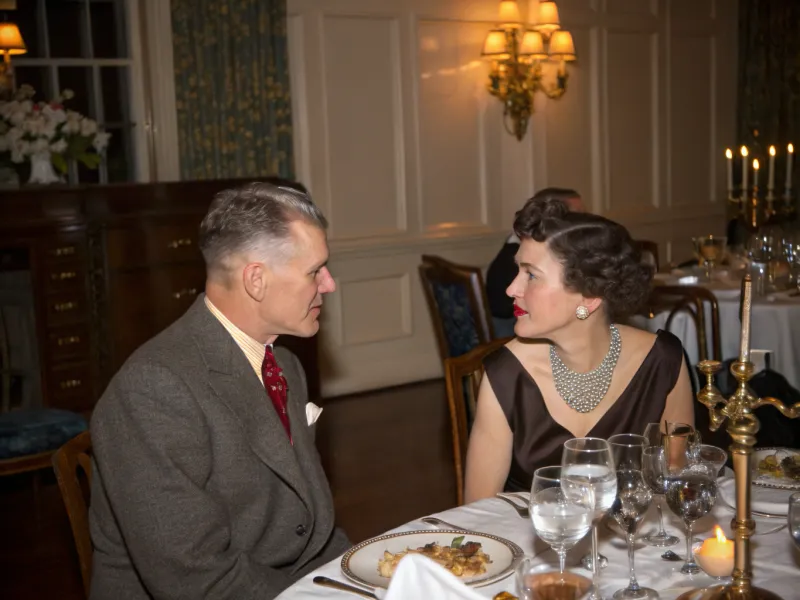
La idea de que una esposa debe estar siempre de acuerdo con su marido en público era un clásico de los años cincuenta. Mantener la armonía y evitar los desacuerdos en público se consideraba esencial para un matrimonio feliz, aunque ello supusiera reprimir las opiniones personales.
Hoy en día, esta noción parece tan anticuada como las tendencias de moda de la época. Las relaciones modernas se basan en la autenticidad y el respeto, y ambos cónyuges son libres de expresar sus opiniones abiertamente, incluso en público.
Let’s celebrate the beauty of honest communication and mutual respect, where agreeing to disagree is perfectly acceptable. Here’s to relationships where authenticity reigns supreme, both privately and publicly!
25. La esposa debe estar siempre disponible
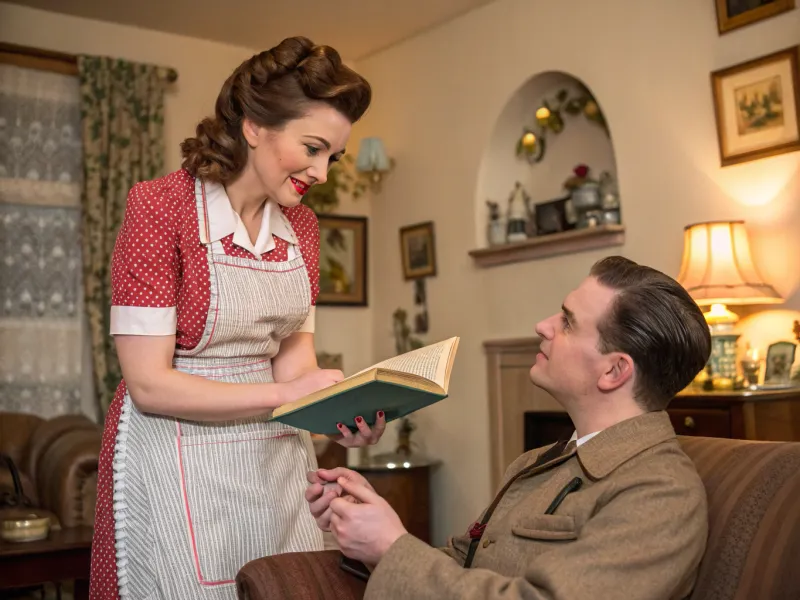
Ever heard the saying that a wife should always be available to meet her husband’s needs? This idea was prevalent in the 1950s, framing women as ever-ready to serve, regardless of their personal desires or needs.
Hoy en día, la idea de disponibilidad constante parece restrictiva y anticuada. Los matrimonios modernos reconocen la importancia del espacio personal y el autocuidado, y comprenden que ambos miembros de la pareja tienen necesidades y deseos fuera de la relación.
Let’s celebrate the evolution of marriage into a partnership that values personal time and individuality. Here’s to relationships where both partners support each other’s independence and growth!
26. Marriage is the Woman’s Responsibility
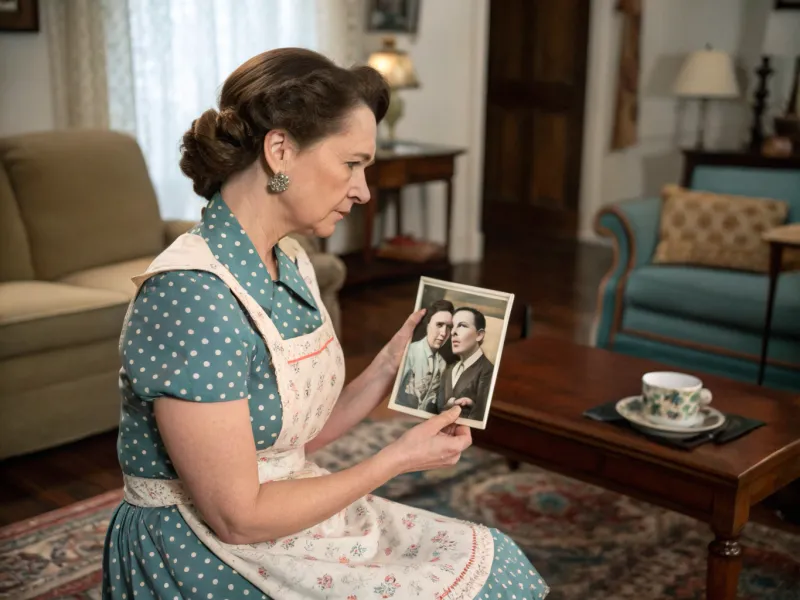
Back in the day, the success of a marriage was often seen as the woman’s responsibility. She was expected to maintain harmony, manage the household, and ensure everything ran smoothly, while the husband focused on providing.
Hoy en día, esta noción parece tan anticuada como los televisores en blanco y negro. Las relaciones modernas se basan en la responsabilidad compartida, en la que ambos contribuyen al éxito del matrimonio a su manera.
Let’s toast to relationships that are built on teamwork and mutual respect, where responsibility is shared and celebrated. Here’s to partnerships that are equal and fulfilling, beyond traditional roles!
27. No tener amigos del sexo opuesto
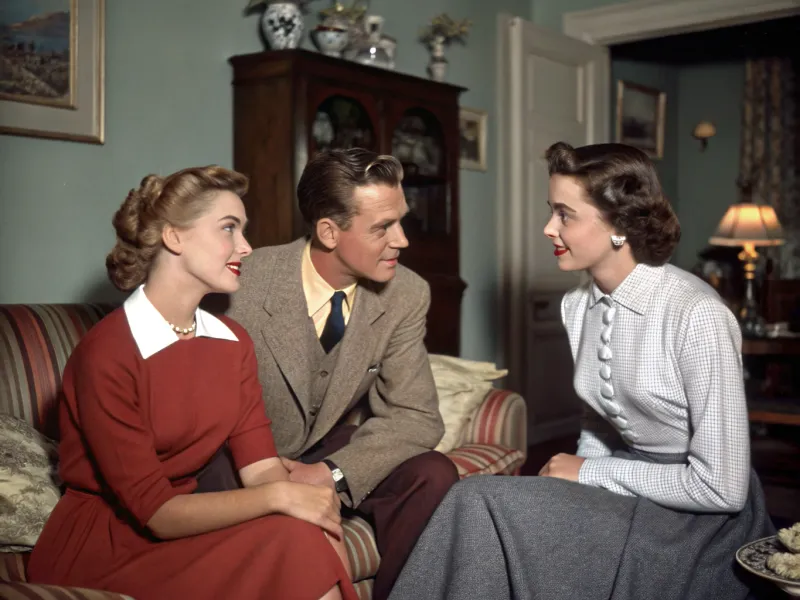
En la década de 1950 prevalecía la idea de que las personas casadas debían evitar las amistades con el sexo opuesto. Esta idea se basaba en el miedo a la tentación y en la creencia de que tales amistades podían poner en peligro la armonía conyugal.
Hoy en día, esta idea parece restrictiva e innecesaria. Las relaciones modernas se basan en la confianza y el respeto, y reconocen que la amistad con personas de cualquier sexo puede enriquecer nuestras vidas y favorecer nuestro crecimiento personal.
Let’s celebrate the freedom to form meaningful connections and friendships, beyond outdated notions of gender roles. Here’s to trusting and supportive relationships where personal growth is encouraged and celebrated!
28. Las mujeres deben casarse jóvenes

Once upon a time, the pressure for women to marry young was as intense as the fear of missing out on the latest Elvis record. The notion was that a woman’s value was tied to her ability to snag a husband while still young and vibrant.
Hoy en día, esta idea parece anticuada y limitante. La sociedad moderna reconoce que no existe una edad ideal para el matrimonio y que el crecimiento personal y la preparación son mucho más importantes que cumplir un requisito social.
Let’s embrace the freedom to marry—or not—when the time feels right, without societal pressure. Here’s to celebrating love and commitment at any age, because the heart knows no timeline!
29. Mantener la política fuera del matrimonio
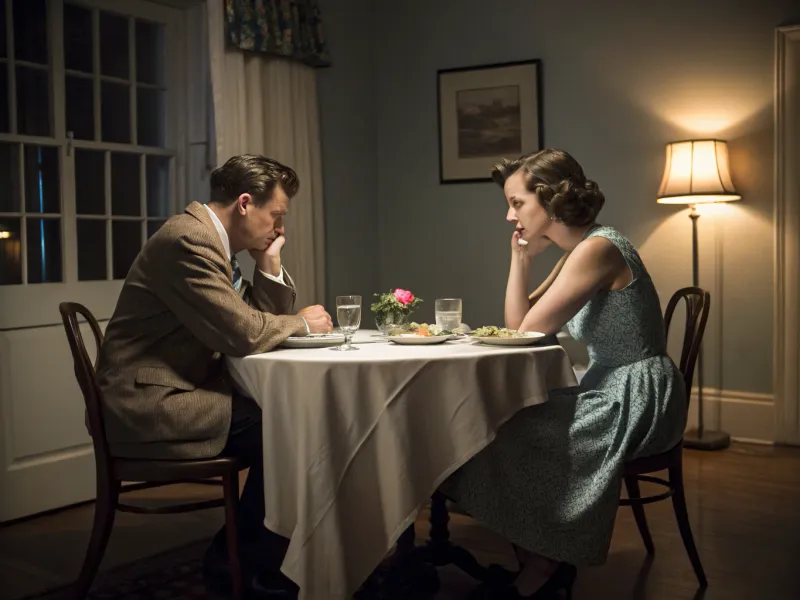
Antiguamente, hablar de política en el matrimonio se consideraba una receta para el desastre. El consejo era mantener esos temas a raya para mantener la paz y la armonía, evitando cualquier posible desacuerdo o conflicto.
Hoy en día, esta noción parece limitante y poco realista. Los matrimonios modernos reconocen la importancia de hablar de temas importantes, como la política, y entienden que esas conversaciones pueden fortalecer la relación mediante valores compartidos y un debate respetuoso.
Let’s celebrate the power of open dialogue and mutual respect in relationships, where discussing politics isn’t off-limits but encouraged as a way to grow and connect. Here’s to relaciones que prosperan gracias a la comprensión compartida y la comunicación abierta.
30. Jealousy Means He Loves You
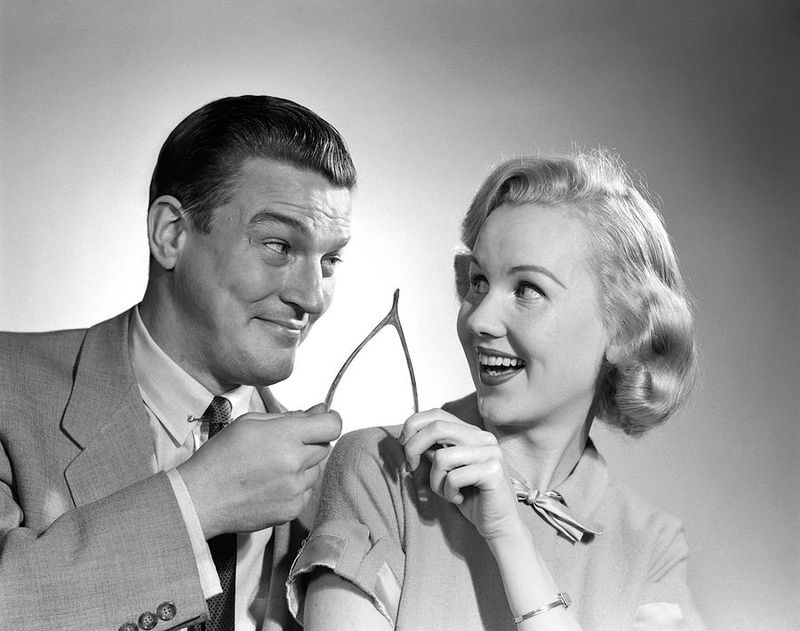
In the 1950s, jealousy was often romanticized—as if a man’s possessiveness proved the depth of his love. The idea was that if he questioned where you were or who you were talking to, it meant he cared. Cue the sigh and eye-roll.
Today, we know that jealousy isn’t love—it’s insecurity dressed in a dated tuxedo. Healthy relationships are built on trust, not control. Your partner should feel secure enough to support your independence, not try to manage it.
Modern love thrives when both people feel free to be themselves, without fear of being accused or controlled. So, let’s leave the toxic tropes behind and embrace relationships where love is based on confidence, not control.
31. Personal Needs Should Be Ignored for the Marriage

In the good ol’ 1950s, sacrificing personal needs for the sake of the marriage was often portrayed as noble—especially for women. Self-care? Not exactly a priority when your worth was tied to being the ever-giving spouse.
Today, we know that self-neglect isn’t a sign of commitment—it’s a recipe for burnout. A healthy relationship means both partners have space to care for themselves, pursue their interests, and recharge without guilt.
Modern marriages flourish when both people feel supported y whole as individuals. Because when you take care of yourself, you’re better equipped to care for each other. Self-love and partnership? That’s the new power couple.
32. The Perfect Wife Cooks Like a Chef
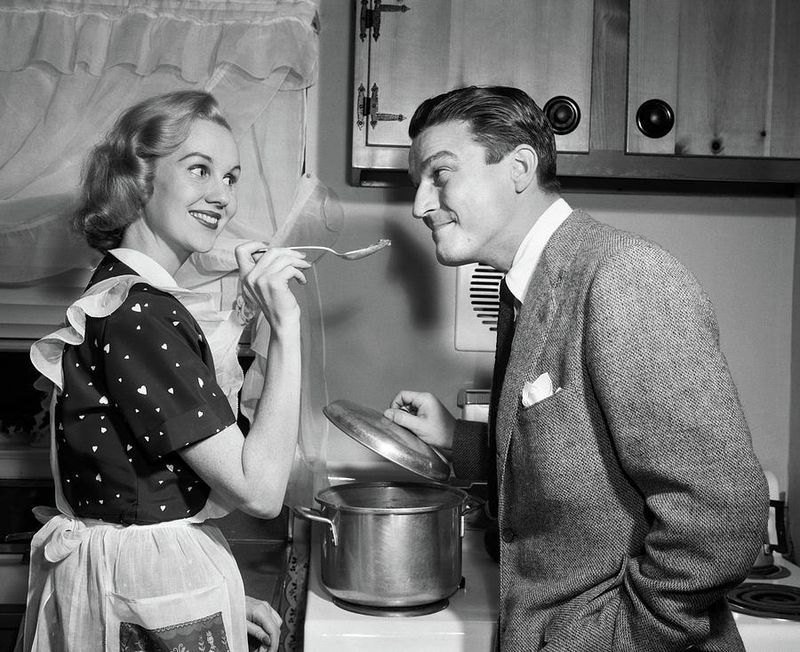
Imagine a world where culinary prowess defined a woman’s worth. In the ’50s, the expectation was that a wife should cook like a professional chef, churning out gourmet meals daily.
As delightful as a home-cooked meal is, this expectation placed unfair pressure on women to excel in the kitchen, regardless of their personal interests or career aspirations.
Today, the joy of cooking is a shared experience between partners, celebrated for creativity, not obligation. Did you know? Cooking shows in the ’50s often featured only male chefs, highlighting the irony of the gendered expectation.
33. A Wife Must Always Wear a Dress

Dresses were seen as the epitome of femininity in the ’50s, with women expected to wear them at all times, even at home. This strict dress code was a symbol of societal ideals rather than personal style.
This notion restricted women’s self-expression and comfort, tying femininity to specific garments. Today, fashion is a personal choice and reflects individual identity, not societal mandates.
Interestingly, pants for women only gained popularity after World War II, when practicality became essential. This shift gradually allowed more freedom in how women chose to present themselves.







